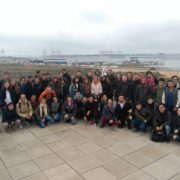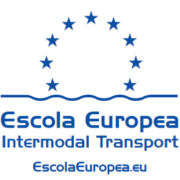Forma’t al Port fills the Escola’s classrooms in the first quarter of 2018
Three hundred and sixty students of higher education courses from thirteen Catalan institutes have filled the classrooms of the Escola Europea during the seven Introduction courses of the Forma’t al Port project organized so far this year.
The participating institutes were: The UAB Foundation (Fundación UAB), the Centre for Polytechnic Studies; Sant Francesc, Prat and López Vicuña Centres for Studies; La Salle Gràcia, Les Salines, Jaume Mimó, Poblenou, Lluïsa Cura, Estela Ibèrica and Joan Brossa Institutes as well as the Escola del Treball from Lleida.
The main objective of the two-day-long Introduction course is to supply upper cycle first-year students of International Trade and Transport and Logistics with a first-hand experience of the Port of Barcelona, its infrastructures, logistical equipment and port operations. In addition, the companies of port community have the opportunity to promote their activities and the professional profiles they seek for their work force. Finally, the course creates a space for dialogue to encourage exchanges between training centres and companies, and thus promote the hiring of students in programmes of dual training.
Introduction characterises the first level of the Forma’t al Port programme and is considered preparatory for the more complex three-day-long Management course, during which participants receive training on board of one of the vessels that covers the regular short sea shipping route between Barcelona (Spain) and Genoa (Italy).
The Forma’t al Port project was launched in 2014 in Barcelona by the Port of Barcelona, Barcelona-Catalunya Logistics Centre, the Barcelona Provincial Council (la Diputació de Barcelona) and the Escola Europea. The first triennium of activities took place between 2015-2017 and had a great drawing power, giving very positive results. This paved the way for a new triennium 2018-2020, which welcomes back the centres already loyal to the programme alongside the addition of new institutes.
For more information, you can visit the website of the project: https://escolaeuropea.eu/training/our-courses/#format.






